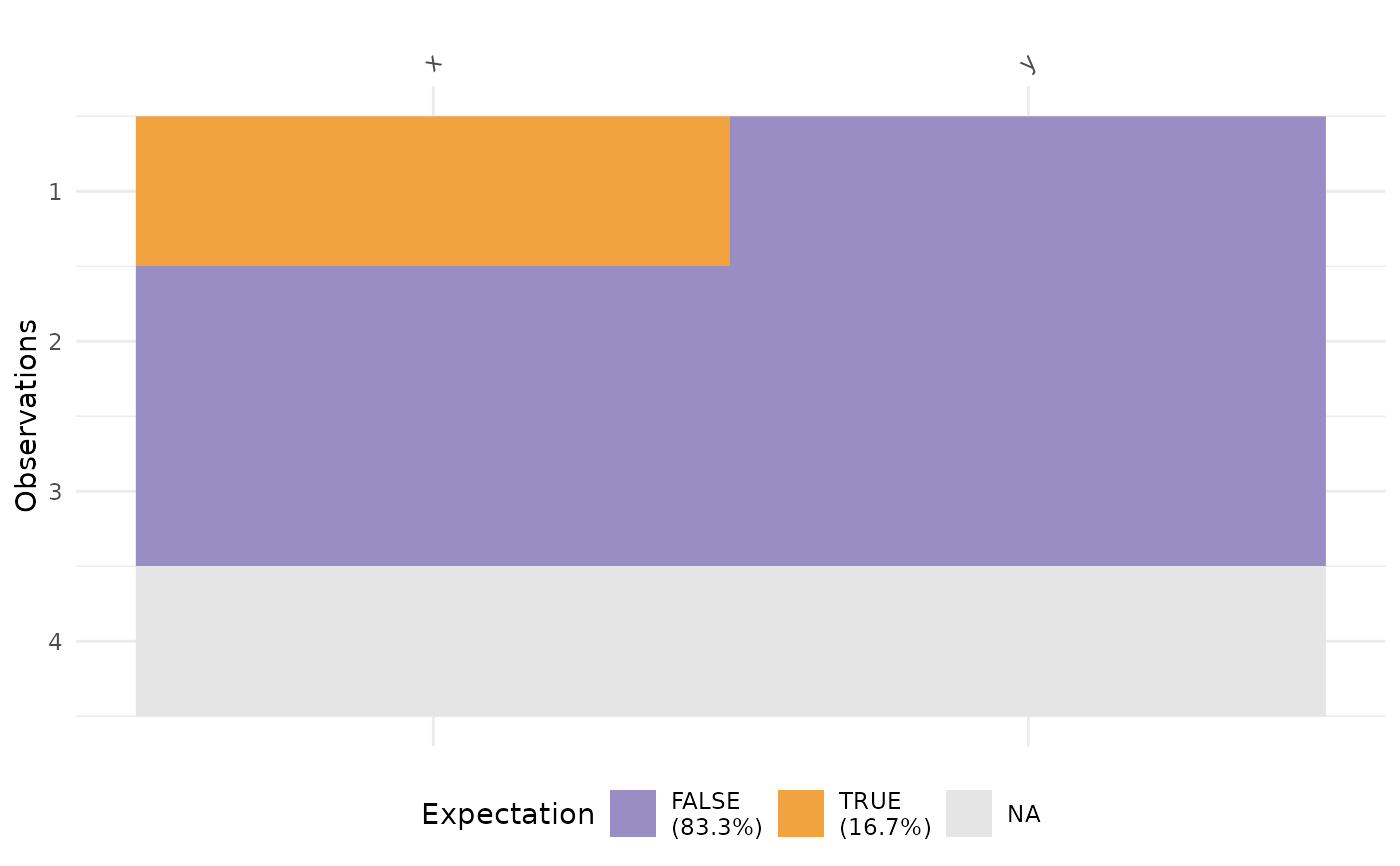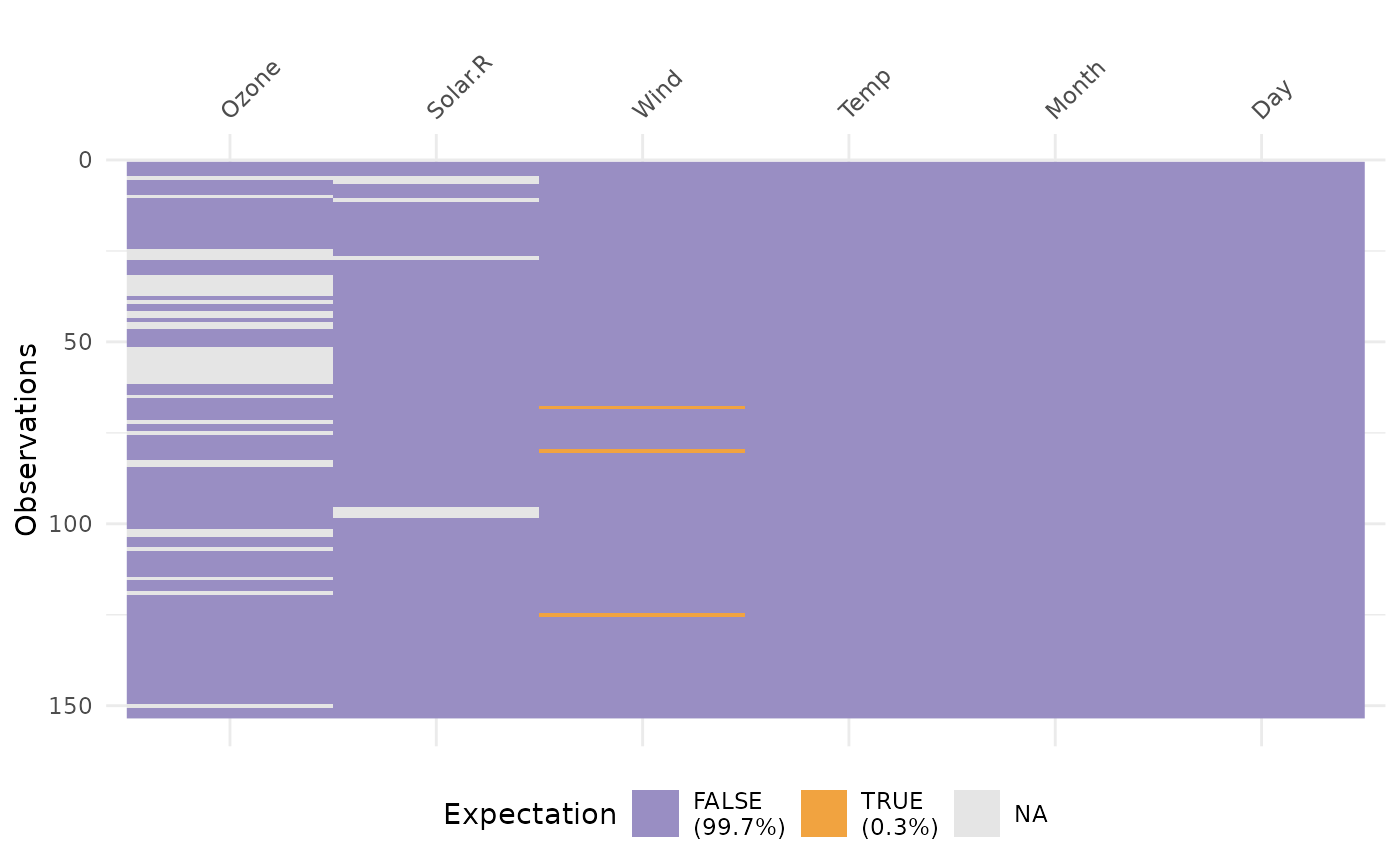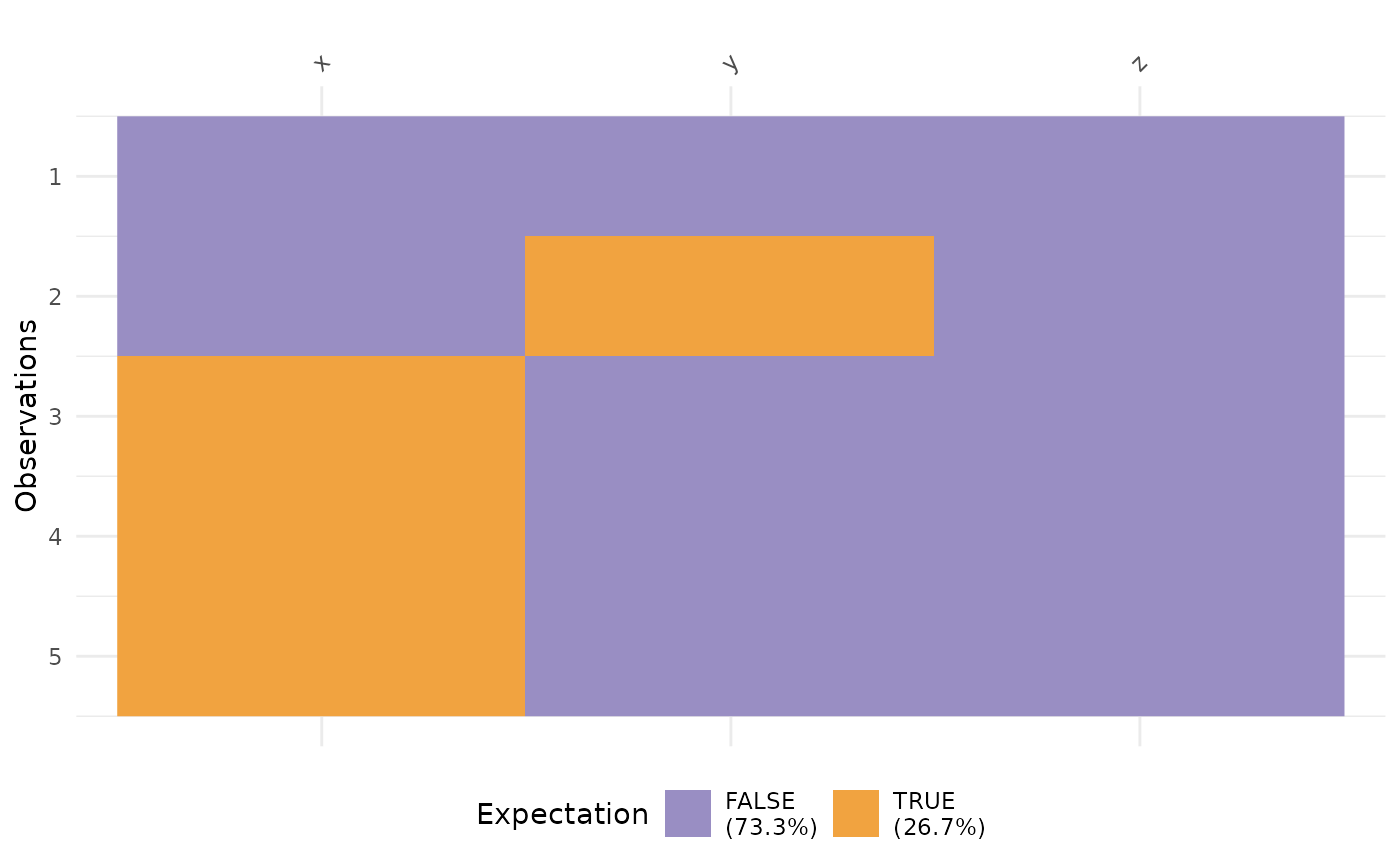vis_expect visualises certain conditions or values in your data. For
example, If you are not sure whether to expect -1 in your data, you could
write: vis_expect(data, ~.x == -1), and you can see if there are times
where the values in your data are equal to -1. You could also, for example,
explore a set of bad strings, or possible NA values and visualise where
they are using vis_expect(data, ~.x %in% bad_strings) where
bad_strings is a character vector containing bad strings like N A
N/A etc.
Arguments
- data
a data.frame
- expectation
a formula following the syntax:
~.x {condition}. For example, writing~.x < 20would mean "where a variable value is less than 20, replace with NA", and~.x %in% {vector}would mean "where a variable has values that are in that vector".- show_perc
logical. TRUE now adds in the \ TRUE or FALSE in the whole dataset into the legend. Default value is TRUE.
Examples
dat_test <- tibble::tribble(
~x, ~y,
-1, "A",
0, "B",
1, "C",
NA, NA
)
vis_expect(dat_test, ~.x == -1)
 vis_expect(airquality, ~.x == 5.1)
vis_expect(airquality, ~.x == 5.1)
 # explore some common NA strings
common_nas <- c(
"NA",
"N A",
"N/A",
"na",
"n a",
"n/a"
)
dat_ms <- tibble::tribble(~x, ~y, ~z,
"1", "A", -100,
"3", "N/A", -99,
"NA", NA, -98,
"N A", "E", -101,
"na", "F", -1)
vis_expect(dat_ms, ~.x %in% common_nas)
# explore some common NA strings
common_nas <- c(
"NA",
"N A",
"N/A",
"na",
"n a",
"n/a"
)
dat_ms <- tibble::tribble(~x, ~y, ~z,
"1", "A", -100,
"3", "N/A", -99,
"NA", NA, -98,
"N A", "E", -101,
"na", "F", -1)
vis_expect(dat_ms, ~.x %in% common_nas)

